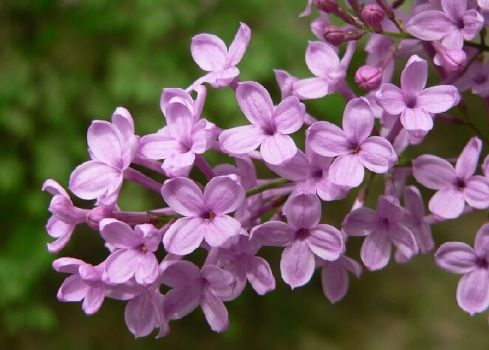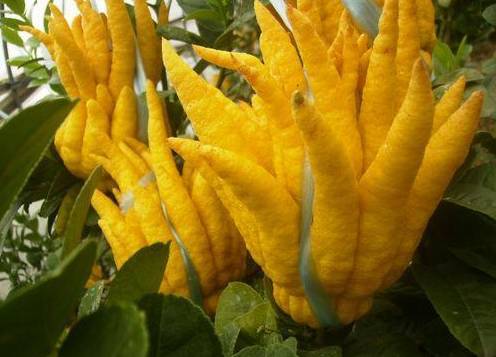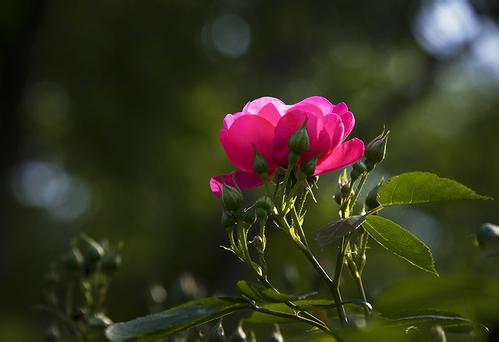Propagation methods of lilac flowers:
1. Cutting method
We select robust branches with clove growth for 1 ~ 2 years for cutting, usually we cuttage time is 1 month after spring flowering, cutting branches select 15 to 20cm branches, select branches with buds, select 2 to 3 pairs of bud nodes are the best, one pair of bud nodes is buried in the soil, under the condition of 25 ℃, about a month can take root, when the young roots from white to yellowish brown, begin to transplant seedlings.

2. Grafting method
Generally carried out before germination in early spring, the length of the scion is 8 cm to 10 cm, with 2 pairs of bud nodes, and the lower sides of the scion are cut into a bevel. The rootstock selects the 2012 clove seedlings, cut off the top at 5 cm to 10 cm from the ground, split a gap vertically down from the cross section of the rootstock, and then insert the scion. The slant of the scion should closely match the rootstock and be tied up with plastic strips. In order to prevent the grafting knife edge from losing too much water, you can bury it with moist soil and remove the covered soil after the buds on the scion sprout.
3. Budding method
Select the robust leaf buds on the branches, and the rootstocks select 1-2-year-old clove seedlings. Usually we choose to graft in August. We should note that only the petiole is needed for grafting, and the leaves need to be cut off. The horizontal knife is cut off from the top of the bud, and the bottom is like a flat cut. We need to peel off the xylem in the cortex. Cross-cut the rootstock 5 cm to 10 cm from the ground, then cut a vertical knife about 3 cm long from the middle of the cut to make it in a "T" shape, then gently peel off the skin and insert the scion into the "T" mouth. The scion and the rootstock should be closely matched, and finally tied with plastic film strips.
4. Leaning connection method
The grafting method means that the scion branches of cloves are connected with drill wood, cut them into the same interface of the same size, and then tie them together. After a period of time, after the wound heals, the top branch can be cut off to grow a plant! This method is easy to operate and has high success rate of reproduction.
The culture method of lilac 1. Planting method
We need to plant lilacs in a sunny place with good ventilation and good light. We choose the planting time in spring, the flower distance between each lilac is about three meters, the plant is cultured for more than 2 years, the planting hole is bigger, 65~85cm is about, deep 55~65cm
100 grams of fully mature organic fertilizer and 100-150 grams of bone meal were applied to each hole, which were fully mixed with the soil as base fertilizer.
two。 Watering
Water it in time after planting, and then water it every other week in the future. Watering varies according to different climates in different regions. In North China, cloves grow vigorously and blossom from April to June. They should be watered 2-3 times a month. After July, they enter the rainy season. Pay attention to drainage and waterlogging prevention. We should pay attention to the lack of drought tolerance of lilac flowers, and we should water them in time.
3. Pruning
Generally, pruning is carried out before the peak growth period in spring, mainly for fine, weak and over-dense branches.
4. Fertilizer application
Clove flowers do not have high requirements for fertilizer, generally we choose not to apply fertilizer, too much fertilization will affect the normal growth of lilac flowers. However, we can apply some phosphorus, potassium and nitrogen fertilizer after flowering to ensure the normal growth of the plant after falling flowers.
Culture methods of clove flowers
Clove flower is a general term for deciduous shrubs or small trees of the genus Oleaceae. Many kinds of flowers are raw materials for extracting flavors and preparing high-grade spices, and their branches and leaves are luxuriant, and the flowers are elegant and fragrant, so the garden is widely cultivated for viewing and is a treasure in the garden. Let's take a look at the cultivation methods of lilac flowers.
Growth habits of lilac
Lilacs like light, warm, moist and sunny, slightly resistant to shade, weak growth in shade or semi-shade, rare flowering, cold tolerance and strong drought tolerance. Lax requirements on the soil, resistance to barren, like fertile, well-drained soil, avoid planting in low-lying land, stagnant water will cause disease, until the death of the whole plant. After defoliation, bare roots were transplanted before germination, and sunny places with fertile soil and good drainage were selected for planting, mainly distributed in subtropical subalpine, hillside forest edge from warm temperate zone to temperate zone, under forest and sunny shrub in cold temperate zone.
Propagation methods of clove flowers
1. Grafting: grafting is the main method of propagation, which can be done by bud grafting or branch grafting. European cloves or lobular privet are mostly used in rootstocks, and bud grafting is usually carried out from late June to mid-July in North China. The scion selected the full dormant buds on the healthy branches of the year, grafted with shield buds without xylem and connected to the trunk of the rootstock 5 centimeters and 10 centimeters above the ground.
2. Sowing: it can be sowed in indoor pot or open field in spring and autumn. Spring sowing is the best in the north. Cold room pot sowing is carried out in late March, the temperature is maintained at 10: 22 ℃, seedlings can emerge in 14: 25 days, and the seedling emergence rate is 40: 90%. Spring sowing in the open field can be carried out from late March to early April. Before sowing, the seeds should be stored in sand for 2 months under the condition of 0: 7 ℃, and the seedlings will emerge half a month after sowing.
3. Cuttings: one month after flowering, the semi-lignified sturdy branches of the same year can be selected as cuttings, the cuttings are about 15 cm long, treated with 50~100PPM indolebutyric acid aqueous solution for 15 hours, and covered with plastic film after cutting. after 1 month, they can take root, and the rooting rate is up to 80%. Lignified branches can also be taken in autumn and winter for cuttings, generally buried in the open field, and cut in the following spring.
Culture methods of clove flowers
1. Planting: cloves should be planted in sunny places with loose soil and good drainage. Generally, bare roots are planted before sprouting branches in spring, with a distance of 3 meters. The hole diameter of 2-year-old 3-year-old seedlings should be 70-80 cm and the depth should be 50-60 cm. 100 grams of fully mature organic fertilizer and 100 grams of 150 grams of bone meal were applied to each hole, which were fully mixed with the soil as base fertilizer.
2. Watering: water cloves thoroughly after planting, and then water the river every 10 days. Loosen the soil and preserve soil moisture after each watering. Irrigation can vary from April to June in North China, which is the season for cloves to grow vigorously and blossom. It is necessary to irrigate 2 or 3 times a month. When the rainy season enters after July, attention should be paid to drainage and waterlogging, and sufficient water should be irrigated before winter begins in mid-November.
3. Pruning: cloves are planted with 3-4-year-old seedlings, and the branches on the ground should be strongly pruned, usually cut off from 30 cm above the ground, and luxuriant flowers can bloom in the second year. Pruning is carried out before sprouting in spring, mainly cutting off the thin and weak branches and overdense branches, and reasonably retaining the regeneration branches. The residual spike should be cut off after flowering.
4, fertilization: cloves generally do not apply fertilizer or only apply a small amount of fertilizer, do not apply too much fertilizer, otherwise it will cause overgrowth, fir and affect the formation of flower buds, on the other hand, reduce flowering. But some phosphorus, potash and nitrogen fertilizer should be applied after flowering.
5. Diseases and insects: the diseases of cloves include bacterial or fungal diseases, such as Fusarium wilt, leaf blight, wilt, etc., as well as diseases caused by viruses, which usually occur in the period of high temperature and humidity in summer. Pests include caterpillars, diamondback moths, leaf moths, wasps, shell insects and so on.
- Prev

The mode of reproduction of bergamot
1. Cutting is usually carried out in spring and summer. Before cutting, the well-developed branches should be selected, cut into several segments, then dry for two days, and then be inserted into the soil after the wound heals, and then take good care of them and wait for them to take root. 2. Grafting is divided into cutting method and leaning grafting method.
- Next

The planting method of rose flower
The first method, the cutting planting method, is the most common planting method, which is generally carried out in late spring and early summer. First of all, it is necessary to select suitable branches, generally choose branches that are well-growing, well-developed and free of insect pests and diseases, cut them off and dry them for two days.
Related
- Fuxing push coffee new agricultural production and marketing class: lack of small-scale processing plants
- Jujube rice field leisure farm deep ploughing Yilan for five years to create a space for organic food and play
- Nongyu Farm-A trial of organic papaya for brave women with advanced technology
- Four points for attention in the prevention and control of diseases and insect pests of edible fungi
- How to add nutrient solution to Edible Fungi
- Is there any good way to control edible fungus mites?
- Open Inoculation Technology of Edible Fungi
- Is there any clever way to use fertilizer for edible fungus in winter?
- What agents are used to kill the pathogens of edible fungi in the mushroom shed?
- Rapid drying of Edible Fungi

